Related Research Articles

The Bolsheviks, led by Vladimir Lenin, were a far-left faction of the Marxist Russian Social Democratic Labour Party (RSDLP) which split with the Mensheviks at the Second Party Congress in 1903. The Bolshevik party, formally established in 1912, seized power in Russia in the October Revolution of 1917, and was later renamed the Russian Communist Party, All-Union Communist Party, and Communist Party of the Soviet Union. The party's ideology, based on Leninist and later Marxist–Leninist principles, is known as Bolshevism.
Bolshevism is a revolutionary socialist current of Soviet Leninist and later Marxist–Leninist political thought and political regime associated with the formation of a rigidly centralized, cohesive and disciplined party of social revolution, focused on overthrowing the existing capitalist state system, seizing power and establishing the "dictatorship of the proletariat".
Communist Party of Russia might refer to:

The Social Democracy of the Kingdom of Poland and Lithuania, originally the Social Democracy of the Kingdom of Poland (SDKP), was a Marxist political party founded in 1893 and later served as an autonomous section of the Russian Social Democratic Labour Party. It later merged into the Communist Workers Party of Poland. Its most famous member was Rosa Luxemburg.

Viktor Mikhailovich Chernov was a Russian revolutionary and one of the founders of the Russian Socialist-Revolutionary Party. He was the primary party theoretician or the 'brain' of the party, and was more of an analyst than a political leader. Following the February Revolution of 1917, Chernov was Minister for Agriculture in the Russian Provisional Government and advocating immediate land reform. Later on, he was Chairman of the Russian Constituent Assembly.

Mark Andreyevich Natanson was a Russian revolutionary who was one of the founders of the Circle of Tchaikovsky, Land and Liberty and the Socialist-Revolutionary Party. In 1917, he was a leader of the Left Socialist-Revolutionaries, which supported the Bolsheviks during the October Revolution. He was the uncle of Alexander Berkman.
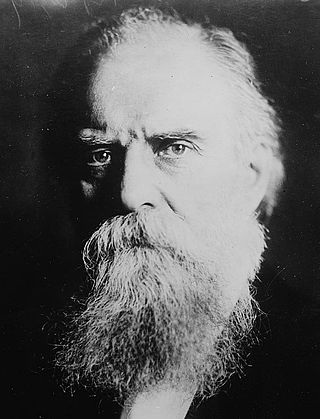
Nikolai Vasilyevich Tchaikovsky was a Russian revolutionary.
Party of Revolutionary Communism was a political party in Russia 1918–1920. It was formed by a Narodnik group which broke away from the Left Socialist-Revolutionaries after the latter's mutiny in July 1918. The party favoured co-operation with the Russian Communist Party (Bolsheviks), and pledged support for soviet power. During its two-year existence the Party of Revolutionary Communism struggled with divisions, as the party sought to assert an independent pole in the midst of war communism.
Znamya Trudovoi Kommuny was a Russian newspaper, published originally, from July 26 to August 18, 1918, under the title «Знамя борьбы» as the organ of a group of Left Socialist-Revolutionaries. Later, from August 21, it was the organ of the Party of Narodnik Communists, a break-away from the Left Socialist-Revolutionary Party. The newspaper ceased publication in November 1918, when an extraordinary congress of the Party of Narodnik Communists passed a resolution dissolving the party and merging it with the Russian Communist Party (bolsheviks).
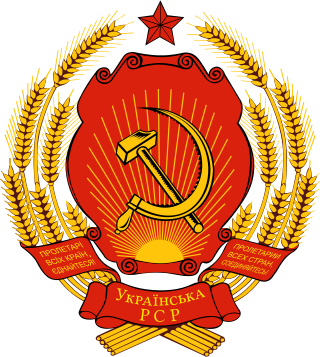
The Communist Party of Ukraine was the founding and ruling political party of the Ukrainian SSR operated as a republican branch of the Communist Party of the Soviet Union (CPSU).
The Borotbists was a left-nationalist political party in Ukraine that existed from 1918 to 1920. It is not to be associated with its Russian affiliated counterparts – the Ukrainian Party of Left Socialist-Revolutionaries (Borbysts) and the Ukrainian Communist Party (Ukapists).
Ukrainian Socialist-Revolutionary Party was a political party in Ukraine and the Russian Republic founded in April 1917, based on separate groups and circles of SRs that existed on the territory of Ukraine since 1905. The left faction of the party dissolved it in 1918 forming a new party, while the Ukrainian Socialist-Revolutionary Party was recreated in January 1919 by its moderate faction members.
Internationalist and defencist were the broad opposing camps in the international socialist movement during and shortly after the First World War. Prior to 1914, anti-militarism had been a key principle among most European socialist parties. Leaders of the Second International had even suggested that socialist workers might foil a declaration of war by means of a general strike.
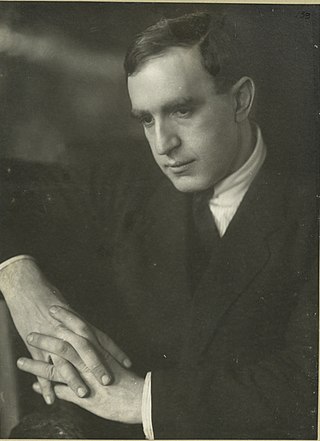
Boris Davidovich Kamkov was a Russian revolutionary, a leader of the Left Socialist-Revolutionaries, and a member of the Council of People's Commissars. He was killed during the Great Purge.
The first significant attempt to implement communism on a large scale occurred in Russia following the February Revolution of 1917, which resulted in the abdication of Tsar Nicholas II. The Bolshevik Party, led by Vladimir Lenin, capitalized on the discontent with the Provisional government and successfully seized power in the October Revolution of the same year. Lenin's government began to transform Russian society through policies such as land redistribution, nationalization of industry, and withdrawal from World War I. After Lenin's death in 1924, Joseph Stalin's rise to power brought about rapid industrialization, forced collectivization, and widespread political repression, which solidified the Soviet Union's status as a major world power but at a tremendous human cost.

The All-Russian Congress of Soviets evolved from 1917 to become the supreme governing body of the Russian Soviet Federative Socialist Republic from 1918 until 1936, effectively. The 1918 Constitution of the Russian SFSR mandated that Congress shall convene at least twice a year, with the duties of defining the principles of the Soviet Constitution and ratifying peace treaties. The October Revolution ousted the provisional government of 1917, making the Congress of Soviets the sole, and supreme governing body. This Congress was not the same as the Congress of Soviets of the Soviet Union which governed the whole Soviet Union after its creation in 1922.
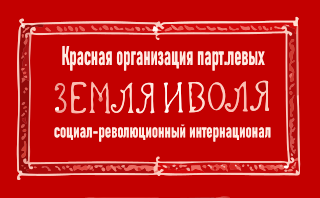
The Party of Left Socialist-Revolutionaries-Internationalists was a revolutionary socialist political party formed during the Russian Revolution.

The Party of Socialist-Revolutionaries, also known as the Socialist Revolutionary Party, was a major political party in the late Russian Empire, during both phases of the Russian Revolution, and in early Soviet Russia.
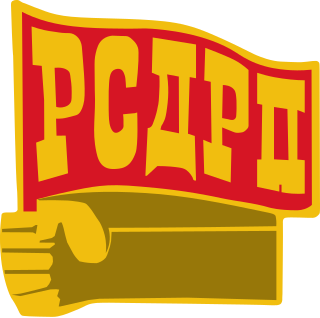
The Russian Social Democratic Labour Party (RSDLP), also known as the Russian Social Democratic Workers' Party or as the Russian Social Democratic Party, was a socialist political party founded in 1898 in Minsk.

Vladimir Aleksandrovich Karelin was a Russian revolutionary, one of the organizers of the Left Socialist Revolutionary Party and a member of its Central Committee, and People's Commissar of Properties of the Russian Socialist Federative Soviet Republic from December 1917 to March 1918.